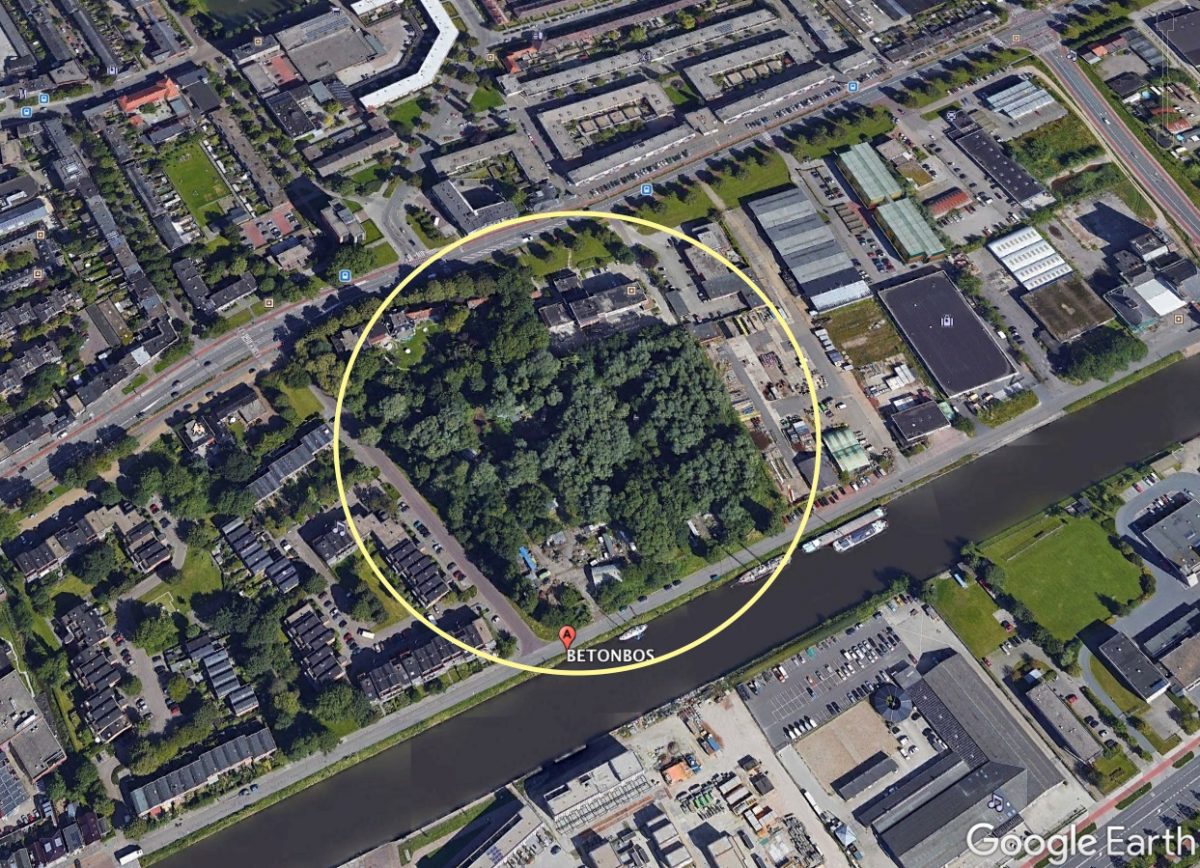Kristin McGee
15 juni 2019
Near the Eemskaaal (as part of the “Stad aan het Water” development project), the gemeente is busy making plans for a large-scale renovation of this area (Eemskanaalzone). East and South of this area, the city has already built a number of apartment complexes which have led to an efficiently structured yet heavily concretized neighborhood. In the heart of north side of the canal is a 15-year-old “tiny forest” – the so-called Betonbos (named because it grew near this concrete industrial area). The local residents allowed this property to grow freely for over 15 years with only minimal maintenance. The area contains a number of ‘tiny houses’ – perfectly situated within this tiny forest. The Bomenridders Groningen spoke with Betonbos residents and we were given a tour during which we learned about the rich wildlife which has proliferated and thrived in this tiny forest. When walking through it, it is incredible to hear the multitude of bird songs in an otherwise industrial and urban area. A variety of birds, bats, hedgehogs, mice, moles and a multitude of insects have taken residence in this small forest. But like every available tree-rich area within the gemeente’s built up area – this one too has been targeted by developers for concentrated, highly profitable living and work complexes.
Already after various proposals for this area were drafted – the city claimed some of these trees were “life threatening”. In April, thirteen large-scale trees received the fatal “nood kap” judgement. These trees were quickly cut at the beginning of the nesting season without any permit or public announcement. Since then, not surprisingly, the gemeente’s go-to tree-cutting research firm, Stedelijk Groen was contracted to do an inventory of the remaining trees. In their report, they proclaimed ca. 160 trees needed to be either severely trimmed or removed. In other words, most of the trees in this tiny forest needed to be removed or dramatically compromised through trimming and topping. Of course, the residents and others concerned with the long-term protection of this tiny oasis know that these inventories are simply the first step which allow and facilitate the quick transformation of these properties to make them “bouw rijp” (building ready) for impending development projects.
Is this the normal way of business and city planning in the era of climate change and ecological and environmental calamity and challenges? We think not. Rather, existing trees and cooling tiny forests which have already been allowed to grow and flourish should be protected and allowed to co-exist in the urban environment. The gemeente (municipality) itself has even written about the need for more tiny forests and more trees in the urban area. Yet in practice they seem to be supporting the opposite as both the gemeente and the province have never witnessed more removal of trees and green areas than in the last ten years (at least relative to the last several decades).
We urge the gemeente to practice what it preaches and take immediate measures to protect this tiny forest. It is a wonder that such green havens exist in our increasingly grey, concretized, heat islands of urban sprawl and development. Groningen should not only be a place for “berikjkbaarheid” (reachability) but for “leefbaarheid” (livability). Because increasing traffic and mobility to a city center center which is increasingly dry and hot will not produce the economic results that the current administration likely seeks. Keep this tiny forest as an example for others to follow so that those living in the urban area have a few cherished spaces nearby as reminders of the daily benefits of wildlife, trees and tiny forests in our larger and interconnected urban forest.

Sources:
Overleeft Betonbos de bouwwoede?
betonbos-pleit-voor-behoud-alternatieve-woonvormen
Red het Betonbos petitie.

